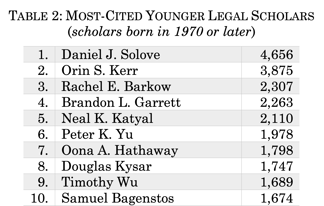 The recently published article The Most-Cited Legal Scholars Revisited from the University of Chicago Law Review lists Texas A&M Law Professor Peter K. Yu sixth among the most-cited legal scholars born after 1970 across all fields.
The recently published article The Most-Cited Legal Scholars Revisited from the University of Chicago Law Review lists Texas A&M Law Professor Peter K. Yu sixth among the most-cited legal scholars born after 1970 across all fields.
The study was conducted by Fred Shapiro, Associate Library Director at Yale Law School and the editor of the Oxford Dictionary of American Legal Quotations.
The issue features essays examining the work of more than a dozen of the most cited legal scholars. In one of these essays, University of Louisville Law Professor John T. Cross explores Lessons to be Learned from Peter Yu.
“Peter has had an indelible impact on the intellectual property law debate for many years,” Cross writes of Yu, who serves as Regents Professor of Law and Communication and Director of the Center for Law and Intellectual Property at Texas A&M University School of Law.
 The five lessons Cross identifies are as follows:
The five lessons Cross identifies are as follows:
- Write on a wide array of topics.
- Analyze topics from multiple perspectives.
- A body of scholarship should be like a high-quality zoom lens.
- Try to come at an issue from a new angle.
- Provide the reader with a full background.
“Much of my research focuses on legal problems that can benefit from a global, interdisciplinary perspective. I am deeply honored that fellow researchers have found my work useful to their scholarship,” said Yu.
 Professor Yu holds a joint appointment at the School of Law and the Department of Communication at Texas A&M University. Under his leadership, the intellectual property law program at Texas A&M University has been transformed into a leading international hub for research and education in the field. In the past five years, peer surveys conducted by U.S. News and World Report have ranked Texas A&M continuously among the top 10 intellectual property law programs in the United States.
Professor Yu holds a joint appointment at the School of Law and the Department of Communication at Texas A&M University. Under his leadership, the intellectual property law program at Texas A&M University has been transformed into a leading international hub for research and education in the field. In the past five years, peer surveys conducted by U.S. News and World Report have ranked Texas A&M continuously among the top 10 intellectual property law programs in the United States.